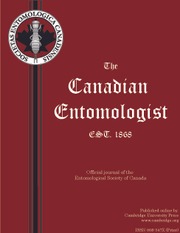Article contents
Revision of the Genus Linosta Möschler (Lepidoptera: Pyralidae)1 with Characterization of the Subfamily Linostinae and a New Subfamily
Published online by Cambridge University Press: 31 May 2012
Extract
The genus Linosta was described by Möschler (1881: 433) for the single species L. sinceralis Möschler from Surinam. There have been few subsequent published references to the genus, but in most collections it stands in the Schoenobiinae. Amsel (1956) surveyed the structural characters and noted that the genus did not fit very well into the Schoenobiinae or any other subfamily and that it would possibly require its own subfamily “Linosterinae”, but he left it in Schoenobiinae for the time being. In my opinion the group is sufficiently distinguished from the Schoenobiinae by the absence of proboscis, of maxillary palpus, of chaetosema, and of tubular 1st A of primary, as well as by the different tympanic and genital striucturc. The absence of the maxillary palpus would place the genus in Chrysauginae, but the joining of the tympanic bullae and the presence of a definite praecinctorium (new term for tablier of Guenée = Schürze of Lederer = Kielhäutchen of Amsel) rule this out. The group obviously belongs in the basal part of the crambine-pyraustine complex; the actual affinity appears to be to the Cybalomiinae (new subfamily, type genus Cybalomia Lederer, characters of Crambinae, but with chaetosema absent). The male genitalia agree well with those of Cybalomia and Stiphrometasia, especially in the close association of the base of the gnathos with a strap-like sclerite connecting with the costal articulation of the valve. Also the tympanic structure is closely similar to that of Stiphrometasia and furthermore to that of Thyridophora, which has a fovea and associated stalking of R5, and M1, just as in Linosta, and which also lacks the proboscis.
Information
- Type
- Articles
- Information
- Copyright
- Copyright © Entomological Society of Canada 1959
References
- 2
- Cited by

